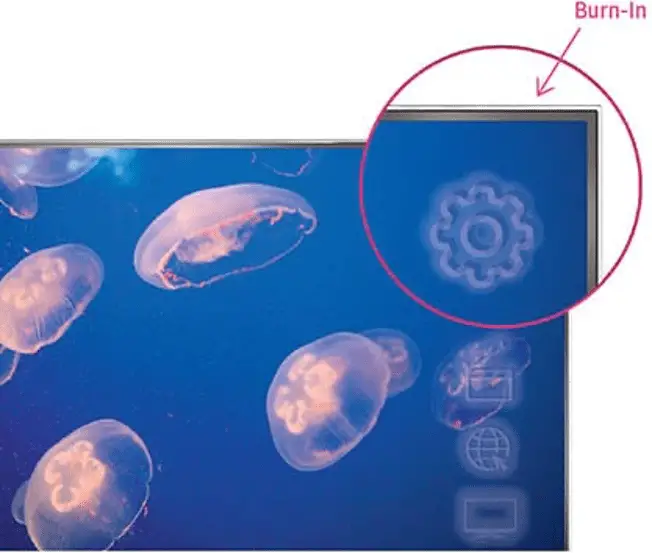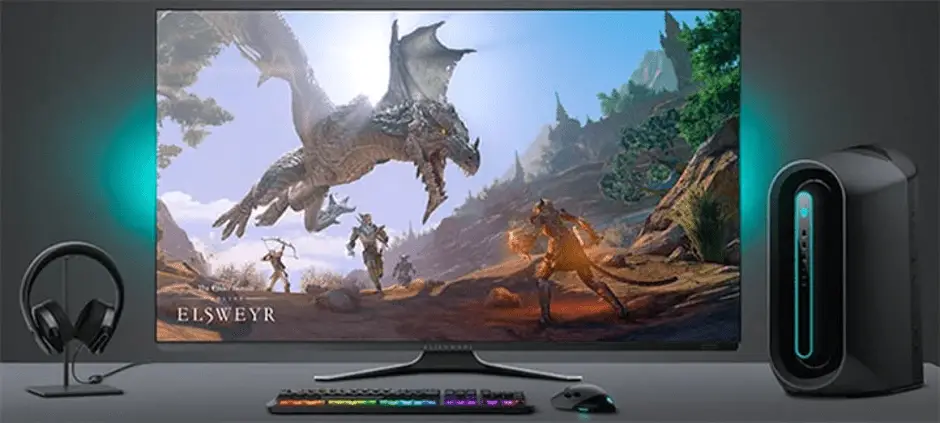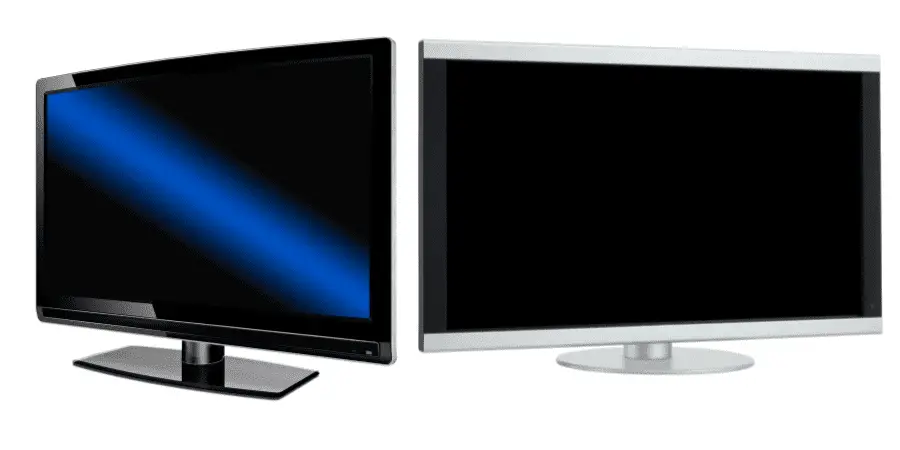This is a question that has been in the mind of every gamer when they decide to buy a new TV screen when upgrading their gaming system.
With a trend of bigger screens for an immersive experience, people have been shifting to TVs instead of dedicated gaming monitors. Especially gamers with consoles face this dilemma more than anyone else.
What is the answer to this burning query?
There is no one basic metric that would measure the difference between the two and bring out one on top. There are variable factors which come down to personal preference.
But to put these varying factors into perspective, OLED panels produce the darkest blacks and their pixel response time speeds are instantaneous. The thing holding back OLED panels is burn in and image retention.
And the fact that OLED cannot get as bright as LCDs which are LED backlit with IPS or VA technology. In comparison to OLEDs, IPS panels have a slower response time and poorer contrast, which, when paired with IPS glow and backlight bleed, results in grayish blacks and a not so good viewing experience. The positive here is that there is no permanent damage in the form of burn in.
Things to know
1.OLED stands for organic light emitting diode. A technology which uses organic matter as the semiconductors in the light emitting diode.
2. OLEDs are the latest technology, and while they are being incorporated slowly into mid-range devices as well, as for now, they are costly and found only in pricey options.
3. LCD stands for liquid crystal display which has various forms like IPS, VA or TN. This is the most common type of display found in smartphones as well as display monitors.
4. Gaming experience depends heavily on stuff like input lag, refresh rate and picture quality.
How to Determine which one better suits you?
To get into this battle and determine a winner depends on how you view things, but still there are metrics which can be compared. There are winners in each of these different comparisons and that’s why everything comes down to personal judgement.
1. Difference of Technology
We know what LCD and OLED stand for, but to understand how these technologies differ is essential. Unlike LCD TVs, OLEDs do not depend upon backlight to produce pictures and images.
Instead, owing to the organic semiconductors used, each pixel emits its own light, which results in an infinite contrast ratio.
Resultantly, OLEDs produce amazing picture quality with the blackest of blacks without any bleeding or other forms of image artifacts. Comparatively, LCDs produce greyish blacks and bleeding is a common phenomenon.
2. Brightness
This is an aspect where LCD beats OLED by a far margin. Indeed, being able to be bright enough translates to you not squinting your eyes while gaming.
Although the case is not this bad with OLED, LCD screen can be very bright, as much as you want with normal TVs going up to 2000 nits. Comparatively, OLEDs are commonly around 800 nits which is a big difference.
Thus, in well lit rooms, you might face a bit of a hindrance while gaming on an OLED Tv. But if you are someone who does gaming in dark rooms, using an OLED would provide a better display as the brightness factor would then be cancelled out.
3. Contrast
As explained, OLED beats LCD due to an infinite contrast ratio. When used in dark settings, this difference is so much pronounced that you can see the difference in blacks and whites between an OLED and an LCD Tv.
Due to this limit on contrast ratio, the LCD Tv is also prone to image artifacts such as bleeding which can be seen in images where there is a small bright portion surrounded by dark portions.
4. The Problem of Burn in and Image Retention
This is one of the points where OLED TVs take a very bad hit in their advantages over the LCD TV. OLED TVs are prone to burn in.
To simply explain burn in, it is a permanent damage to the TV that happens because of displaying static images such as logos, health bars, menu etc.
in the same place for long periods of time when gaming. This does not go away if it happens and appears somewhat in the background. Although some gamers might not mind this, but most people would not want a permanent damage to their TV screen.

Image retention is almost the same thing but is temporary and goes away in a few minutes.
This does not happen with LCD panels as they do not face this problem at all. However, companies do acknowledge this problem and have been trying to come up with a permanent solution.
Newer OLED TVs have built in pixel shifting technology as well screen savers to prevent this. Samsung boasts that their new Quantum dot technology guarantees that there is no risk of burn in.
5. Response Time and Refresh Rates

The instant pixel reaction time speed of OLED screens assures that there is no apparent ghosting or overshoot behind fast-moving objects, irrespective of the refresh rate.
The reaction time performance of IPS displays varies among panels. Even the fastest IPS panel isn’t as fast as OLED, but gaming performance will be smooth as long as the pixels transitions keep up with the refresh rate.
Most OLEDs have a refresh rate of 120Hz at 4k resolution which is enough for most gamers especially with next gen gaming on consoles. However, higher refresh rates mean a low input lag, and thus there are far faster options when it comes to IPS LCD, boasting refresh rates as high as 390Hz or even more.
Another perk of OLEDs is that they are better at displaying a resolution other than native. If 4K is too demanding for your system, a 4K OLED at 2560×1440 will look better than a 4K IPS display at the same resolution.
To sum up,
It’s difficult to choose between LCD and OLED as the greatest form of display. Both of these technologies have advantages and disadvantages in different areas. If you’re on a tight budget, you’ll almost certainly end up with an LCD panel.
OLED is currently more of a luxury, as devices featuring these screens are typically on the pricier end of the market. OLED is progressively gaining ground on LCD at the present.
The increase is due to the fact that it is making its way into more cheap gadgets. The bottom line is that, once the financial aspect is removed, it all comes down to personal preference.
Related Articles:

